I noted on Monday how “Australian households cannot escape recession”, citing the Q4 2024 ABS national accounts figures showing that real per capita household consumption had fallen for eight consecutive quarters.
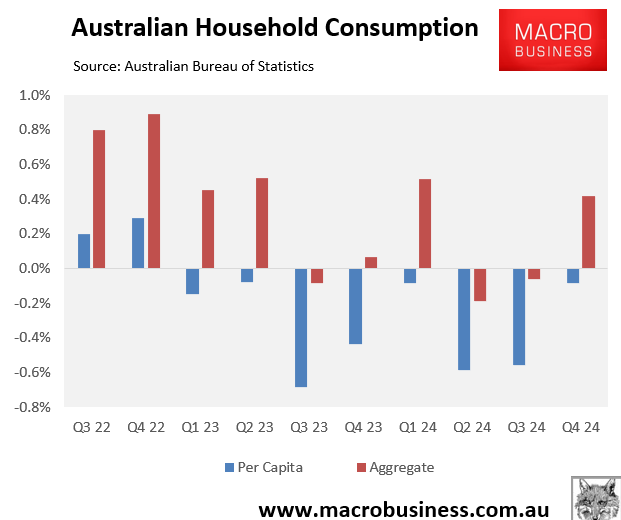
The decline in consumption follows a record 8% fall in real per capita household incomes.
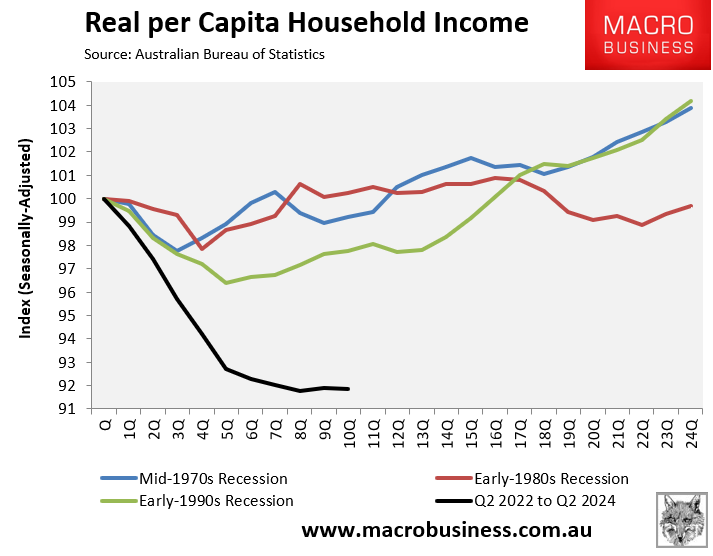
The Q1 2025 retail sales figures also fell in real per capita terms, suggesting that households remained trapped in recession in early 2025.
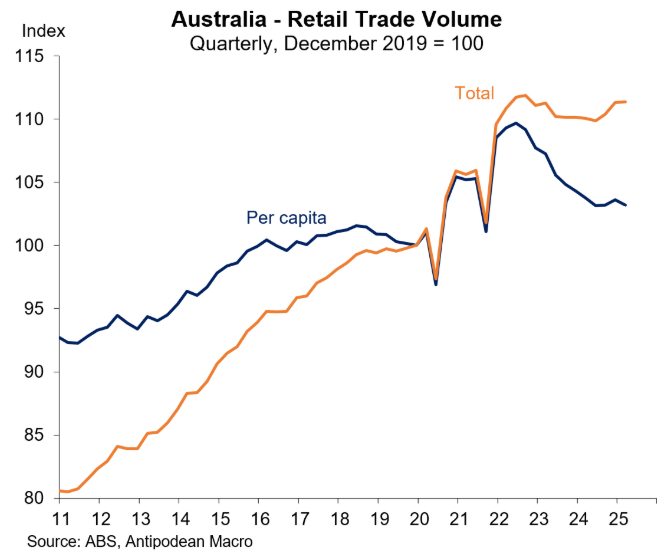
On Tuesday, the ABS released its Monthly Household Spending Indicator (MHSI), which was much weaker than expected, falling by 0.3% in aggregate nominal terms in March.
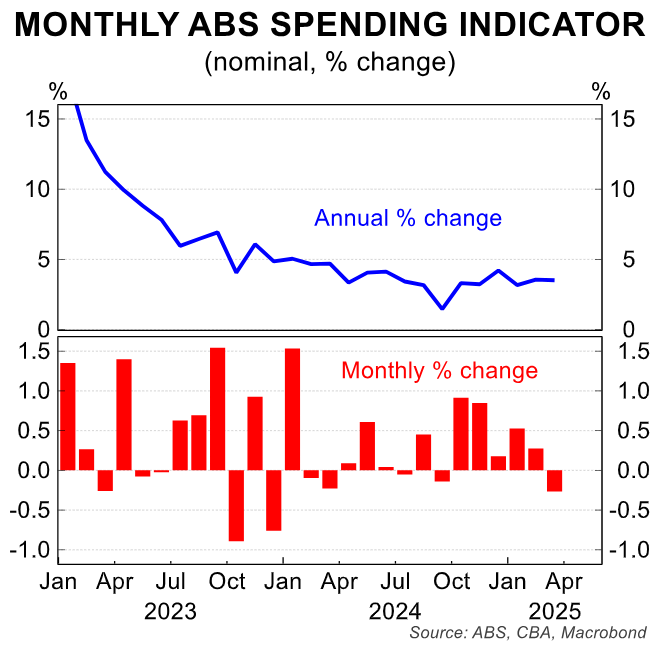
Over the first quarter of 2025, aggregate nominal consumption growth slowed to just 1.0% following the 1.6% increase in Q4 2024. As illustrated below, the result was in line with CBA’s Household Spending Insights (HSI) data.
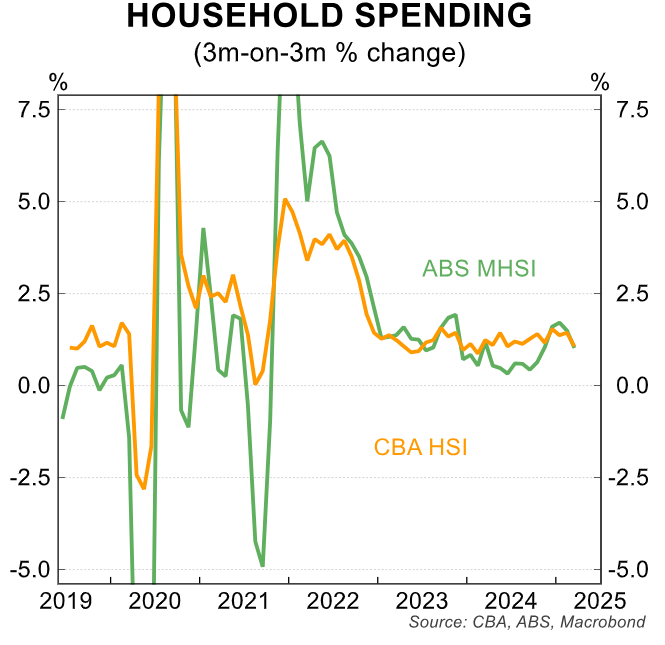
The volume of household consumption (i.e., inflation-adjusted) was flat in Q1 25 in seasonally adjusted terms and would have declined by around 0.4% in per capita terms.
The following chart from CBA plots the ABS’ MHSI against household consumption in the national accounts:
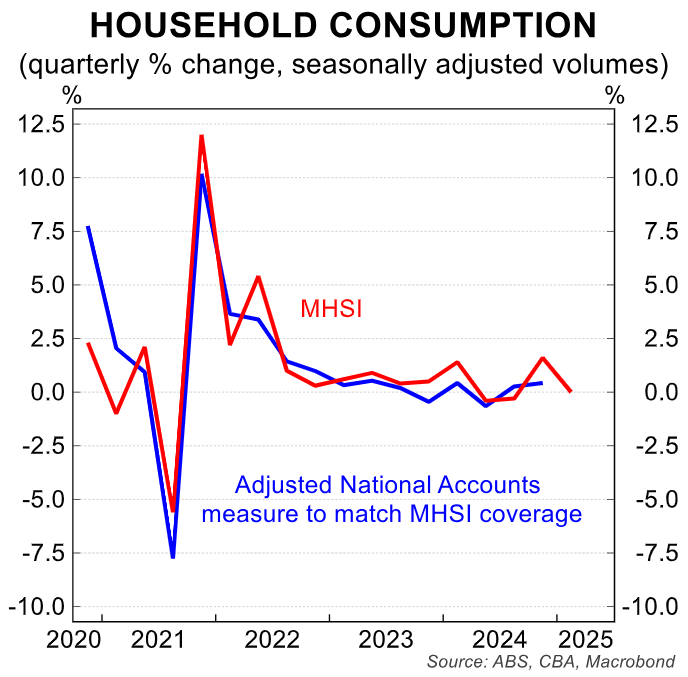
“Annual growth [in the MHSI] is sitting at just 0.9%, following the 2.3% run rate in Q4 24”, noted CBA senior economist Stephen Wu. “That is a weaker-than-expected outcome and poses downside risks to the RBA’s expectation for a sustained improvement in household consumption growth this year”.
“The RBA’s latest published forecasts are for a 0.6%/qtr increase in Q1 25 followed by a 0.8%/qtr increase in Q2 25″…
“CBA weekly spending data has long suggested that the increase in after-tax incomes because of the stage 3 tax cuts from 1 July last year has not translated to a commensurate increase in consumer spending”.
“The data indicates that consumers are making deliberate choices to save and pay down debt out of the tax cuts”, Wu wrote.
The collapse in real per capita spending in Q1 2025 suggests that Australian households remain stuck in recession.

